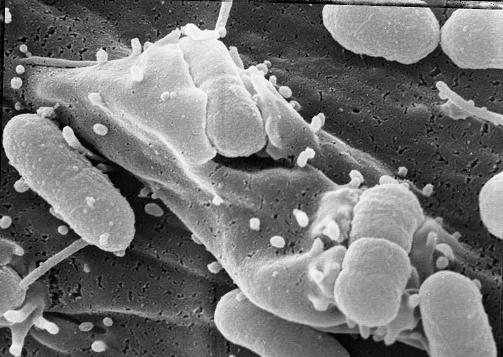Scientists from the University of St Andrews (St Andrews) in Scotland have prepared interesting biological compounds in the test tube by revealing the chemical secrets of nature

In the preparation of fluorine-containing chemicals, an important group of materials includes commercial products such as Teflon andProzac, you will be able to greatly assist this money-intensive industry that currently produces the above-mentioned materials using dangerous methods.
The discovery by the researchers from the School of Chemistry showed, for the first time, that it is possible to obtain fluorine-containing compounds in the laboratory under mild biological conditions.
Professor David O'Hagan, who led the research team, is very excited about the breakthrough. He explains: "Chemicals containing fluorine are very important in the pharmaceutical industry and they also play an important role in medical imaging. "In very few types of organisms, nature has found a way to make these compounds under gentle conditions and we have been able to take advantage of this mechanism.
"We hope that our biological pathway can be applied to the preparation of fluorine-containing amino acids and sugars and we are now working on the application of this technology to the preparation of compounds for the field of medical imaging aimed at detecting cancerous tumors."
Chemicals containing fluorine are important as a whole both in the pharmaceutical and agrochemical industries (fertilizers, etc.) and in the polymer industry such as Teflon, which is used in non-stick cookware, in clothing and even in construction. Other well-known compounds from this group include the antidepressant Prozac, the antifungal diflucan, and the anticancer drug 5-fluorouracil. However, these materials are prepared with the help of toxic chemicals that pose significant safety and toxicity risks to the industrial laboratories.
The new method discovered at the University's Center for Biomolecular Sciences is a rare environmentally friendly process for preparing fluorine-containing chemicals in water without any waste or toxic risks. The lead researcher continues and explains: "Now, our research team has revealed the way in which this rare soil bacterium (Streptomyces cattleya) produces fluorine-containing amino acids. "It was an extremely important goal to reveal how this bacterium produces these rare fluorine-containing compounds. Five biological catalysts (enzymes), including the important catalyst that inserts a fluorine atom (fluorinase), were further expressed through genetic engineering and combined together in vitro. The mixture promoted the successful preparation of amino acids containing fluorine from the natural source - fluorine."
Being the 13th most abundant element on Earth, fluorine is abundant in the Earth's crust. However, it is bound as an insoluble salt, and the available fluorine in seawater or groundwater - its quantity is low. As a result, nature has hardly developed a biochemistry of fluorine and there is a very small number of natural compounds containing fluorine. It was discovered that only two bacteria and a handful of highly toxic plants found in Africa and other tropical regions are capable of producing toxic fluorine-containing compounds.

3 תגובות
1) From the first paragraph the word: "progress" was indeed omitted by mistake.
2) The adjective "rare" refers to the unusual nature of the discovered natural process.
Hope the news is a little clearer now.
I checked the original news…
Indeed, I don't know if it was translated from a recorder or originally written in English, but it doesn't get a high grade for syntax...
Dear Dr. Nachmani
As always, the news is interesting and intriguing.
But again... there is a problem with the Hebrew. Maybe the problem is the shorter than usual lunch break I took, but I can't understand the first paragraph.
Also, the adjective "rare" in paragraph 6 (...is an environmentally friendly process in a rare way...) is so unclear that I'm not sure what you meant?
With you is the forgiveness and patience to correct